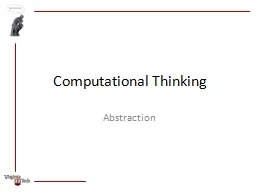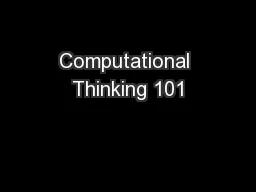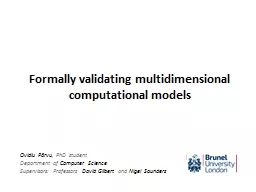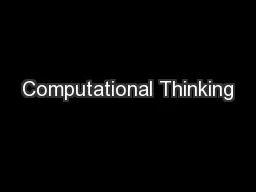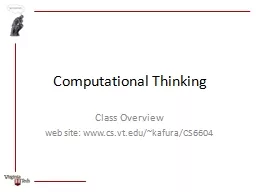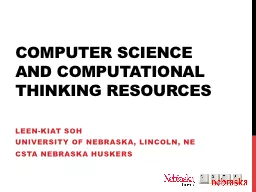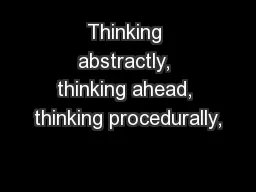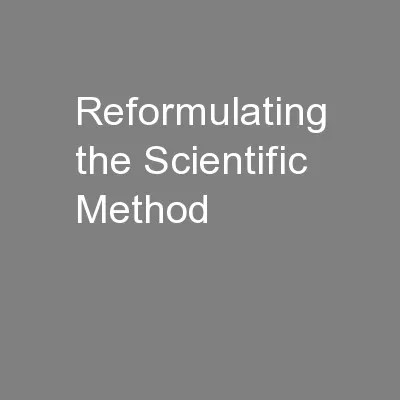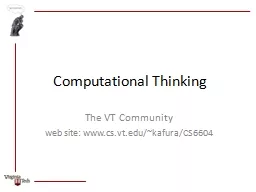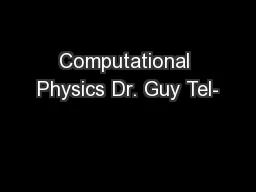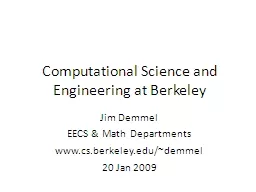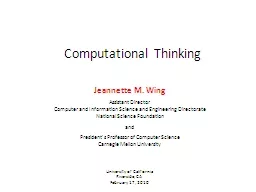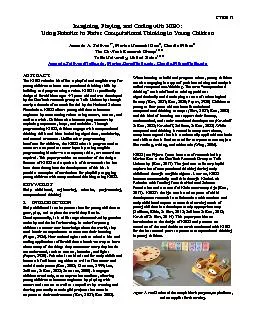PPT-Computational Thinking
Author : giovanna-bartolotta | Published Date : 2016-04-03
Abstraction Abstraction Goals What is abstraction Is it teachable How to assess Abstraction has two facets Removing detail to simplify and focus attention p38 identifying
Presentation Embed Code
Download Presentation
Download Presentation The PPT/PDF document "Computational Thinking" is the property of its rightful owner. Permission is granted to download and print the materials on this website for personal, non-commercial use only, and to display it on your personal computer provided you do not modify the materials and that you retain all copyright notices contained in the materials. By downloading content from our website, you accept the terms of this agreement.
Computational Thinking: Transcript
Download Rules Of Document
"Computational Thinking"The content belongs to its owner. You may download and print it for personal use, without modification, and keep all copyright notices. By downloading, you agree to these terms.
Related Documents

